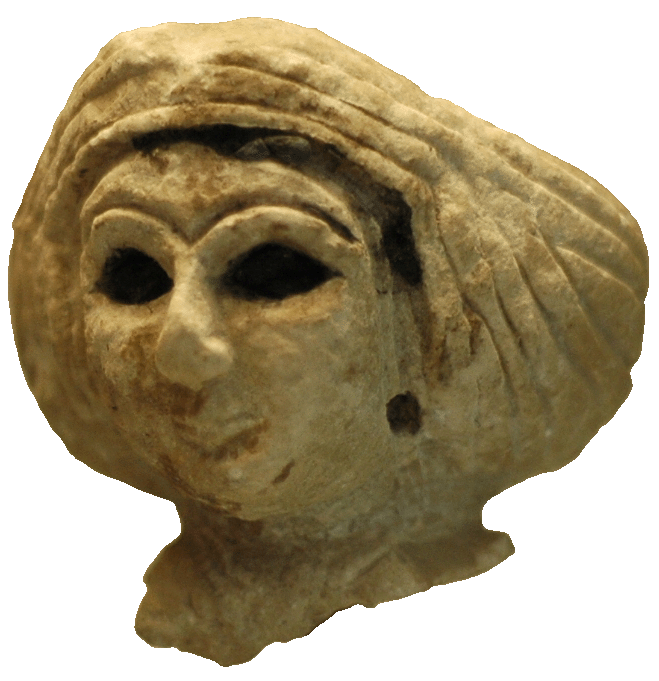Shubat-Enlil
- Shubat-Enlil
-
Tell Leilan
Tell Leilan est un site archéologique du Proche-Orient antique, située dans la vallée du Khabur. Il correspond à l'antique cité nommée Shekhna, capitale du pays d'Apum, aussi connue sous le nom de Shubat-Enlil lorsqu'elle fut la résidence du roi Samsi-Addu d'Ekallatum.
 Portail du Proche-Orient ancien
Portail du Proche-Orient ancien Portail de l’archéologie
Portail de l’archéologie
Catégorie : Ville du Proche-Orient ancien
Wikimedia Foundation.
2010.
Contenu soumis à la licence CC-BY-SA. Source : Article Shubat-Enlil de Wikipédia en français (auteurs)
Regardez d'autres dictionnaires:
Shubat Enlil — ▪ Syria modern Tell Leilan , or Tall Laylān ancient city in northeastern Syria. Excavations of the mound at the site were begun by Harvey Weiss of Yale University in 1979. His work uncovered archaeological remains dating from about 5000… … Universalium
Shubat-Enlil — A town on the upper reaches of the Tigris River that the Amorite Assyrian king Shamshi Adad I (reigned ca. 1813 1781 b.c.) chose as his capital circa 1800 b.c. Originally inhabited around 5000 b.c., Shubat Enlil (or Shekhna) long remained of… … Ancient Mesopotamia dictioary
Tell Leilan — Tell Leilan, Syria is the site of a city known as Shekhna in ancient times. It is situated in the Khabur river basin by the river Jarrah. The site was discovered in 1978 by archaeologist Harvey Weiss. Early history of Tell Leilan The city… … Wikipedia
MESOPOTAMIA — The original article in the first edition of the Encyclopaedia Judaica traced Mesopotamian history to its earliest beginnings and provided a detailed survey of Mesopotamian literature and institutions. With the availability of such tools as J.… … Encyclopedia of Judaism
Royaume de Haute-Mesopotamie — Royaume de Haute Mésopotamie Le Royaume de Haute Mésopotamie est une construction politique éphémère due en grande partie à un homme : Samsi Addu d Ekallatum (c. 1815 1775). Le nom de cet État lui a été donné par les historiens contemporains … Wikipédia en Français
Royaume de Haute-Mésopotamie — Extension approximative du Royaume de Haute Mésopotamie à la mort de Samsi Addu. Le Royaume de Haute Mésopotamie est une construction politique éphémère due en grande partie à un homme : Samsi Addu d Ekallatum (c. 1815 1775). Le nom de cet… … Wikipédia en Français
Royaume de Haute Mésopotamie — Le Royaume de Haute Mésopotamie est une construction politique éphémère due en grande partie à un homme : Samsi Addu d Ekallatum (c. 1815 1775). Le nom de cet État lui a été donné par les historiens contemporains, du fait de son extension… … Wikipédia en Français
Royaume de haute-mésopotamie — Le Royaume de Haute Mésopotamie est une construction politique éphémère due en grande partie à un homme : Samsi Addu d Ekallatum (c. 1815 1775). Le nom de cet État lui a été donné par les historiens contemporains, du fait de son extension… … Wikipédia en Français
Assyrie — Pour l’article homonyme, voir Assyrie (province romaine). Le cœur historique de l Assyrie (en rouge), et l empire assyrien lors de son extension maximale sous le règne d Assurbanipal au milieu du … Wikipédia en Français
Shamshi-Adad I — (fl. late 18th century BC (short chronology)) rose to prominence when he carved out a large kingdom in northern Mesopotamia, the Old Assyrian Kingdom, although the Assyria was soon defeated by Hammurabi of Babylon and remained in the shadow of… … Wikipedia

